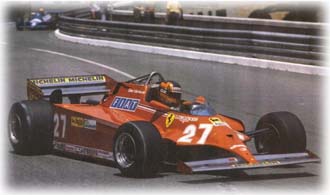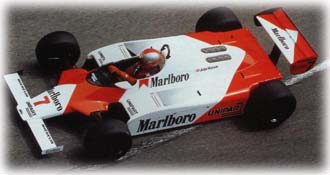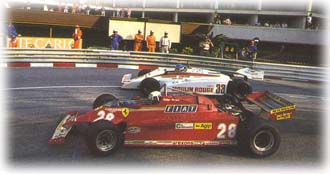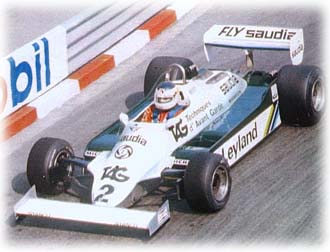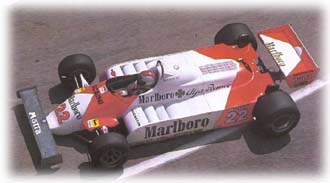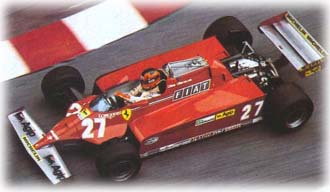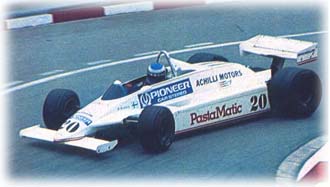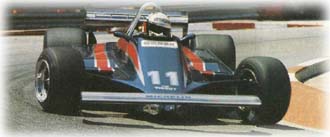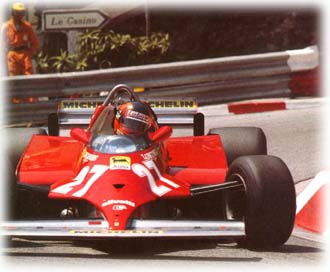|
| |||
 |
A Race to Remember | ||
| by Marcel Schot, Netherlands | |||
|
Every Grand Prix Venue has its most remembered race; that race where the mighty gods of Formula One diced and dodged to achieve eternal greatness and set the record books straight. But every Grand Prix venue also has remarkable races that were pushed aside in the history books, for no good reason. Atlas F1 writer Marcel Schot reviews, ahead of every Grand Prix this season, one race which should be memorised and valued; that one round in history which makes a Race to Remember
Start-line accidents and rain have played a great part in the history of the Monaco Grand Prix. Who doesn't remember David Coulthard's Williams and both Ferraris of Alesi and Berger colliding in 1995 or Derek Daly's flight above the field in 1980? Rain brought Olivier Panis his only victory in 1996, while one of the most famous Monaco Grands Prix is that of 1984 in which two young men called Ayrton Senna and Stefan Bellof challenged leader Alain Prost until the race was red flagged because of the extremely bad weather. While on the subject of Ayrton Senna, the Brazilian really was one with the track at Monaco. His five successive wins in the small municipality are a statue for his greatness.
However, this time we look at a great race which starred another crowd favorite. The 1981 Monaco Grand Prix was one of Gilles Villeneuve's six Formula One victories. In a time when turbos were just starting to appear in Formula One and were deemed uncompetitive on the short straights and twisting turns of Monaco, the French-Canadian outsmarted the competition to claim a victory that he normally couldn't have taken.
Before the race
Surprisingly in fourth was Riccardo Patrese who had shown remarkable performances in the Arrows. Ferrari, with their turbo engine, had suffered a slow start of the season. Didier Pironi had scored his first two points at Imola, the fourth race of the season. Gilles Villeneuve, who had claimed pole in Imola, scored his first points at Zolder, but with five points after five races, Ferrari were far from competitive.
Those ho were also far from competitive, were the drivers who went out first: the pre-qualifiers. With 31 cars wanting to take part in the event, the organisation deemed the number too big for qualifying, so in an early session nine cars had to battle for four places in qualifying, reducing the number of cars in qualifying to 26 of which 20 would be allowed to start the race.
Six teams had to take the early wake-up call: ATS with pop-drummer Slim Borgudd in the cockpit; Ensign with Swiss driver Marc Surer; March with Eliseo Salazar and Derek Daly; Osella with Beppe Gabbiani and Piercarlo Ghinzani; Theodore with their only driver Patrick Tambay; and finally Toleman with Brian Henton and Derek Warwick.
Both Tambay and Surer were way ahead, claiming easy access to the actual qualifying sessions. Both Tolemans were firmly settled in the bottom two places, Henton being the better of the two some seven seconds slower than Tambay. Both Marches weren't quite up to par too, which left two Osellas and an ATS for the final two spots in qualifying. Ghinzani's Osella was the fastest of the three with his teammate six tenths slower and ATS' Slim Borgudd a full second behind, making the Swede the final victim of pre-qualifying.
After the first qualifying session, Pironi had to settle for 16th place. As if that fact wasn't embarrasing enough for a Ferrari driver on its own, pre-qualifier Patrick Tambay put his Theodore two places in front of Pironi.
On the frontside of the grid, Nelson Piquet impressed in the Brabham, steering his car across the track a full second faster than anyone else. Championship leader Reutemann only set the ninth fastest time.
Some four seconds slower than Piquet were the drivers who were battling to get within the first twenty. After the first session, Marc Surer and Jean Pierre Jabouille (Ligier) were just on the good side of twenty, while both Fittipaldis (Rosberg and Serra), both Osellas, Arrows driver Siegfried Stohr and Tyrrell's Michele Alboreto were on the wrong side.
Stohr improved his time enough to claim one of the twenty starting places, as did Michele Alboreto. Beside Rebaque, Jabouille also moved outside the top 20. Most unfortunate was Keke Rosberg in the Fittipaldi. Despite improving his time from the previous session by as much as one and a half seconds, he failed to qualify, as Tyrrell driver Alboreto improved by an incredible 2.3 seconds to beat the Finn by less than one tenth of a second.
Two drivers starred at the front: Gilles Villeneuve just beat Nigel Mansell in the second session, the Canadian putting in a 1:25.788 and the Briton posting a 1:25.815. However, both remained behind Nelson Piquet, whose 1:25.710 of the first session was enough for pole. Reutemann had a good second session, claiming fourth on the grid.
The race
When the race finally started, the top three quickly pulled away as the rest followed. The rest minus two, that is. Halfway through the field, Mario Andretti and Andrea de Cesaris collided at Ste Devote, ending both their races before they even got into the slippery tunnel. As the field approached the tunnel for the first time, everyone held their breath. However everything went allright and everyone got by safely.
By lap 14 Reutemann finally found his gap alongside Mansell. However, once the Argentinian jumped into the gap, he found out it was slightly too small. Since he was already there and there was no way back, only one option remained; Reutemann touched Mansell's Lotus with his front-wing, breaking the Briton's suspension and ending his race. Reutemann was able to continue the race, but not in third place like planned. Instead, his teammate Alan Jones, who had got by Riccardo Patrese and Elio de Angelis earlier on, move up to third.
Jones immediately encountered Gilles Villeneuve, who was struggling in the Ferrari. The massive power delivered by the turbo engine made the car nearly undriveable, as the power was delivered with a slight delay after Villeneuve pushed the throttle and the brakes started fading quickly as the enormous power had to be nearly halted after every outburst on the short straights. Villeneuve then made the smart call and after three more laps of fending of the Williams, let the reigning World Champion by without much trouble.
By then Carlos Reutemann had had to end his struggle to keep the damage in the championship standings limited as his gearbox failed. Nelson Piquet was still leading Alan Jones and Gilles Villeneuve, but the Canadian was losing pace because of his car handling trouble. By lap 50, the field was reduced to only nine cars as Bruno Giacomelli and Michele Alboreto put eachother out of the race. The track proved to be a massive slaughterhouse again, as also John Watson's McLaren came to a halt after 53 laps with a blown engine.
Villeneuve was giving it all he had and when the two came onto the pitstraight after 72 of the 76 laps, the number 27 Ferrari pulled alongside the number 1 Williams. As Villeneuve dove into Ste.Devote first, a massive roar emerged from the crowd. Over the next four laps Villeneuve drove away on the wings of euphoria, finishing with a 40 second gap over Alan Jones. Jones, despite his problem, still finished second well ahead of Ligier driver Jacques Laffite, who was rewarded with a podium finish after driving in the shadow for the entire race.
Villeneuve's teammate Pironi finished fourth, but a lap down, demonstrating his lack of speed over the weekend. Another lap down, Eddie Cheever finished fifth, followed by Marc Surer, who scored a point for Ensign, which was quite a performance as he was one of the drivers who had to pre-qualify. Another pre-qualifier who reached the chequered flag was Theodore's Patrick Tambay, four laps down he was the seventh and last to finish the race.
Conclusion
Besides Villeneuve, Alan Jones also had a great race, starting from seventh, but fighting his way up to the lead. Ofcourse the race did not only have good racing, but also dramatics. Multiple collisions, costing one leader his race, and technical problems, costing another leader his race, made Monaco a place of few finishers once again. This allowed the hard workers to cash in for once. This race also made the championship a bit more interesting. Ferrari was now starting to go places and the leading threesome of Reutemann, Jones and Piquet got a little closer together.
|
| Marcel Schot | © 2000 Kaizar.Com, Incorporated. |
| Send comments to: schot@atlasf1.com | Terms & Conditions |
